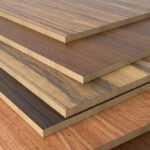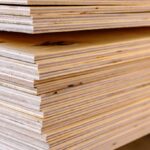Plywood is a widely used and versatile engineered wood product, known for its strength, durability, and versatility. However, like any material, plywood is not immune to defects or issues that can compromise its performance and longevity. Three common problems that can occur with plywood are delamination, voids, and warping. Recognizing these defects early and taking preventive measures can ensure that you choose the best quality plywood for your project and avoid potential pitfalls down the line.
1. Delamination:
Identification: Delamination occurs when the layers or plies of plywood separate from each other, leading to weak spots and reduced structural integrity. You may notice gaps or bubbles in the plywood’s surface, indicating that the adhesive used to bond the layers has failed.
Prevention:
- Buy from Reputable Suppliers: Purchase plywood from trusted and reputable suppliers known for their quality products.
- Inspect Before Buying: Thoroughly examine the plywood sheets for any signs of delamination, such as bubbles or visible gaps between the plies.
- Choose the Right Type: Different types of plywood are designed for specific applications. Ensure you choose the appropriate grade and type of plywood suitable for your project’s needs.
- Avoid Excessive Moisture: Moisture is a common cause of delamination. Store plywood in a dry and well-ventilated area to prevent moisture absorption.
2. Voids:
Identification: Voids are hollow spaces or gaps within the plywood sheet, caused by the absence of wood fibers or adhesive. These areas can compromise the plywood’s strength and create uneven surfaces.
Prevention:
- Check for Imperfections: Before purchasing, closely inspect the plywood for any visible voids, knots, or irregularities in the surface.
- Quality Matters: Invest in higher-grade plywood, as it typically has fewer voids and higher adhesive quality.
- Proper Storage: Store plywood flat and in a dry environment to minimize the risk of voids forming due to moisture.
3. Warping:
Identification: Warping occurs when the plywood sheet bends, twists, or cups due to uneven moisture absorption or environmental changes. Warped plywood can be challenging to work with and may not provide a stable surface for construction.
Prevention:
- Choose the Right Grade: High-quality plywood is less likely to warp, so opt for higher-grade plywood when possible.
- Proper Moisture Management: Avoid exposing plywood to excessive moisture or extreme temperature changes, as these can cause warping.
- Storage: Store plywood in a flat position and avoid leaning it against a wall or surface, which can lead to warping over time.
- Acclimatization: If possible, allow the plywood to acclimate to the environment in which it will be used before starting the project.
- Edge Sealing: Applying a coat of sealant or paint to the edges of the plywood can help reduce moisture absorption and prevent warping.
Conclusion:
Identifying and avoiding common defects in plywood, such as delamination, voids, and warping, requires vigilance during the selection and storage process. Purchasing from reputable suppliers, inspecting the plywood for visible defects, choosing the appropriate grade, and proper storage are key steps in ensuring you get the best quality plywood for your projects. By taking preventive measures, you can enhance the durability and performance of plywood and achieve successful and long-lasting results in your construction and woodworking endeavors.






